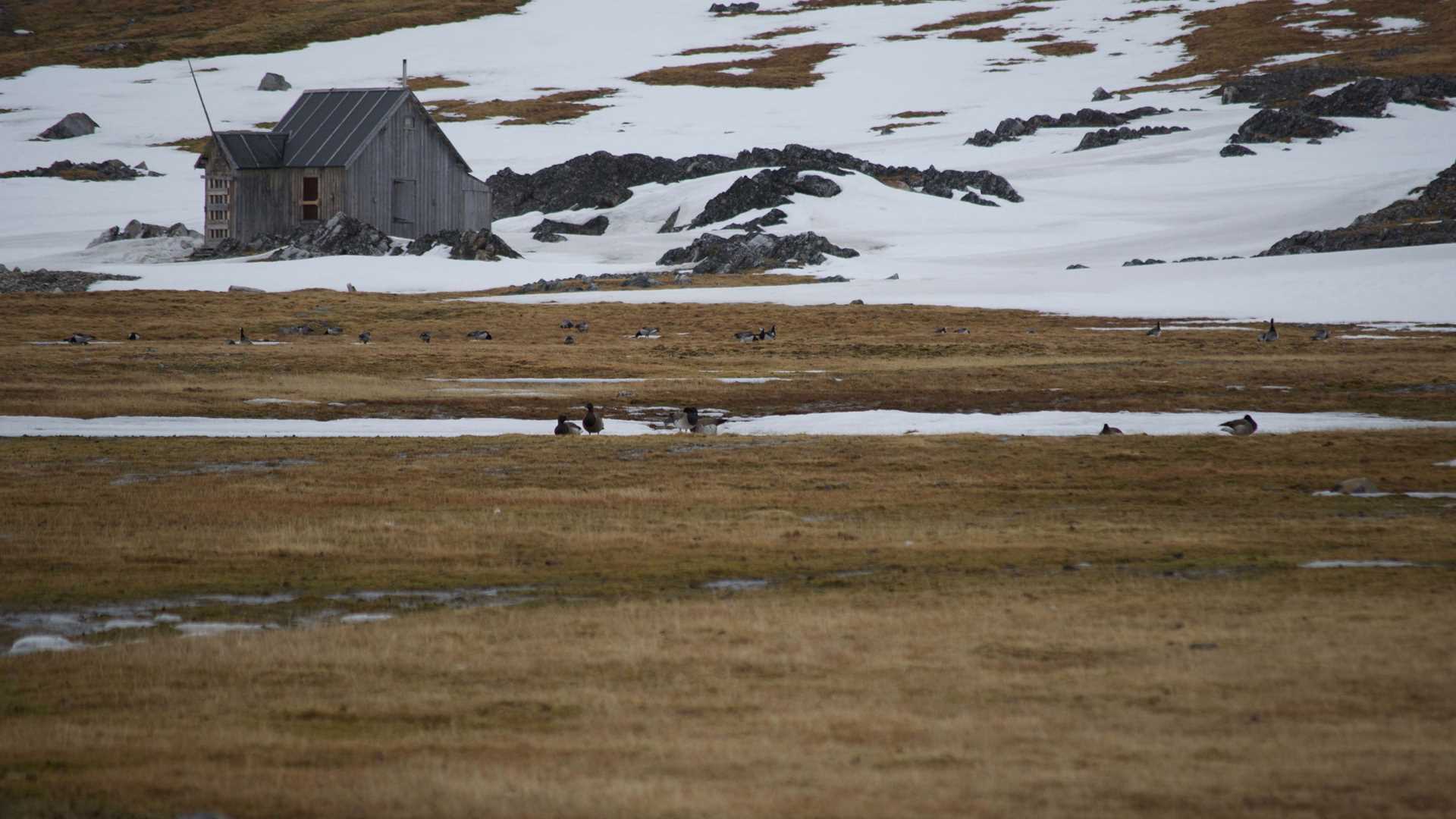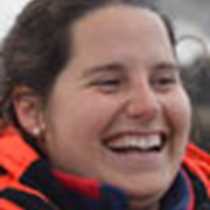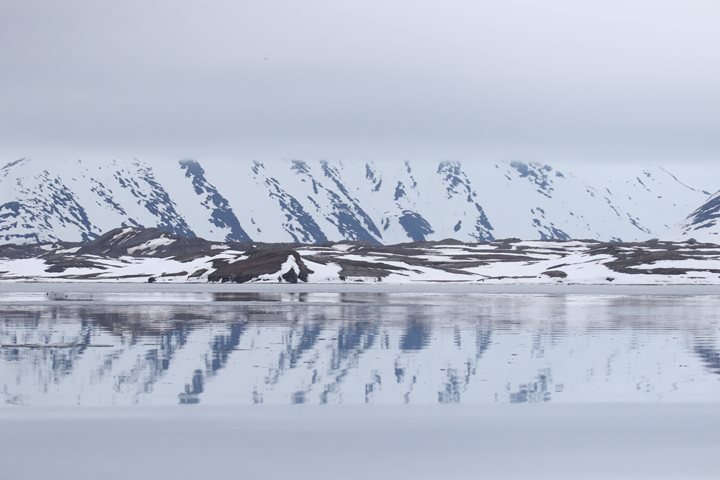As we arrived in the morning to Bellsund, the fog lifted up and we had a clear way for a landing. From the bridge, the chosen landing site, Camp Miller, is meticulously checked. A scout Zodiac is sent ashore with our polar bear guards and scouting team. The coast is clear, the landing is secure, we are ready to explore.
To greet us just by the landing site, many Svalbard reindeer - the smallest of all species of reindeer and a key species for the tundra, were grazing on sparse vegetation. We walked from the beach, to snow, and the beginning of tundra that is starting to show up in between the melting ice. As we walk through this beautiful landscape the only singing bird in Svalbard, the snow buntings, sounds a beautiful melody.
Birds arrive in the millions to these places, looking for resting and nesting grounds. Barnacle and pink footed geese will be down at the tundra. Kittiwakes and guillemots will choose their perfect spot on the high cliffs. There were so many that it almost sounded like a waterfall hidden behind the clouds. These thousands of birds will leave the perfect tundra fertilizer, their guano. This it the beginning of summer, and life in the high arctic is about to explode with the sun and light.
The surrounding area was very important in the beginning of the 1900s for mining— coal, zinc and gold exploration. We walked our way towards a hut that was used by miners and trappers. Fox traps are still found on the way, as well as some railcar remains. Many areas in Svalbard were well know for whalers but Bellsund was a specific site to look for the white whale – beluga.
This was just the beginning of our day. Right after lunch we found a secluded bay. Zodiac cruising as well and kayaking was how we explored Svalbard for the afternoon. We saw many common eiders, kittiwakes, glaucous gull’s and our first sightings of arctic terns. Occasionally a bearded seal would pop their head out the water, very curious about us.







